30+ I Statements Examples to Download
Effective communication is essential for building healthy relationships, resolving conflicts, and expressing ourselves authentically. One powerful tool that promotes open dialogue and understanding is the use of “I” statements. In this article, we will explore the concept of “I” statements, provide a step-by-step guide on how to write them, and offer a collection of 30+ examples to help you enhance your communication skills.
1. Printable I statements

therapistaid.com
2. I Statements Worksheet Example
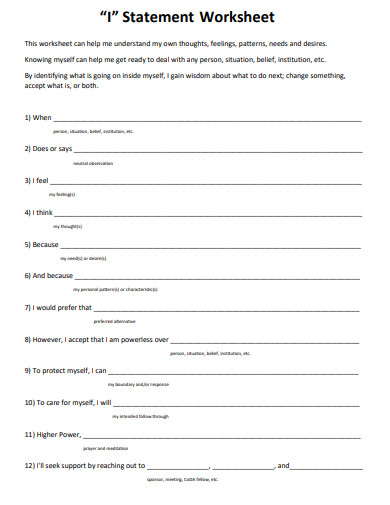
codependents.org
3. I Statements Conflict Resolution Example
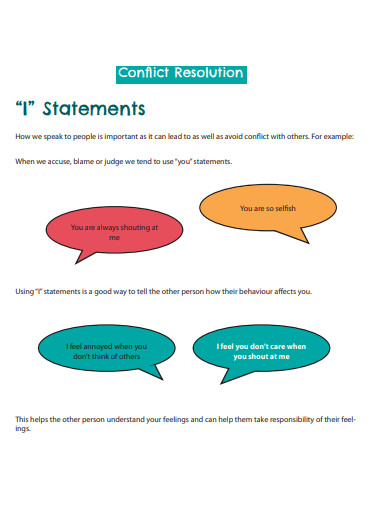
scottishconflictresolution.org.uk
4. I Statements Practice Example
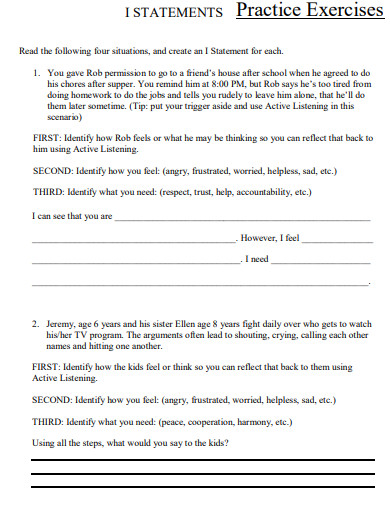
connectcounsellingsociety.ca
5. I Statements Communication Example
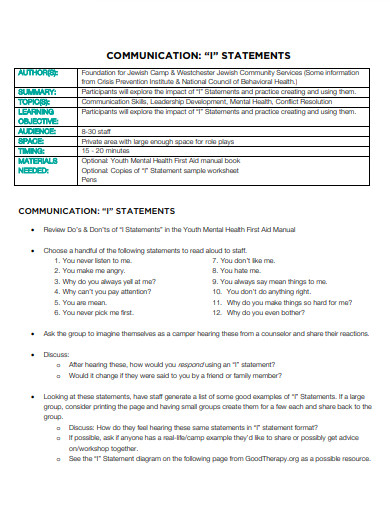
jewishcamp.org
6. Kindergarten I Statements Example
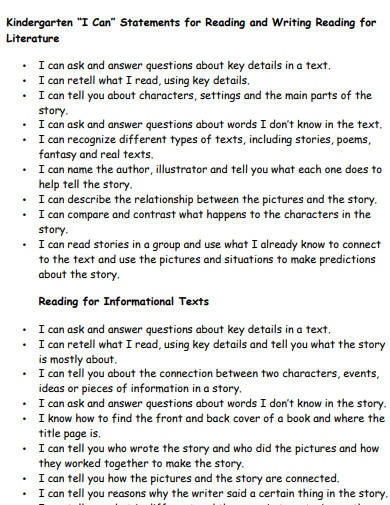
fcusd.org
7. I Statements Activity Example
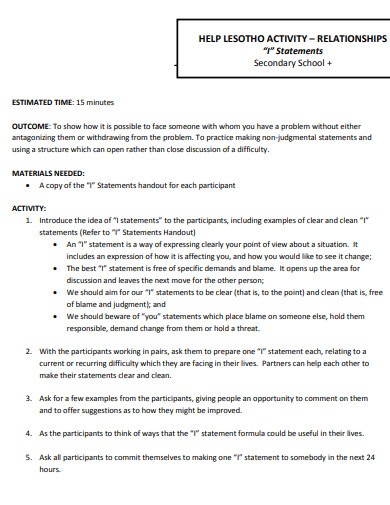
helplesotho.org
8. I Statements Counseling Example
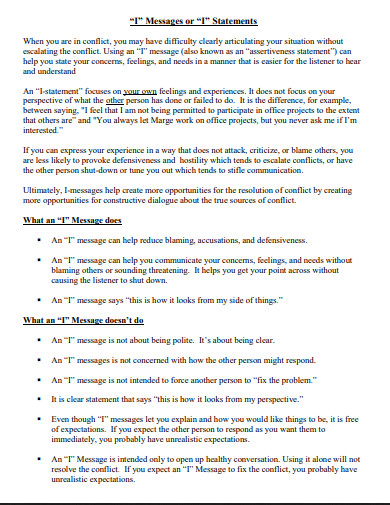
bumc.bu.edu
9. Benefits of I Statements Example
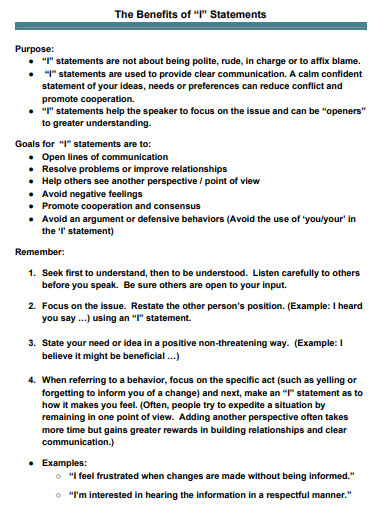
greatexpectations.org
10. Assertive I Statements Example
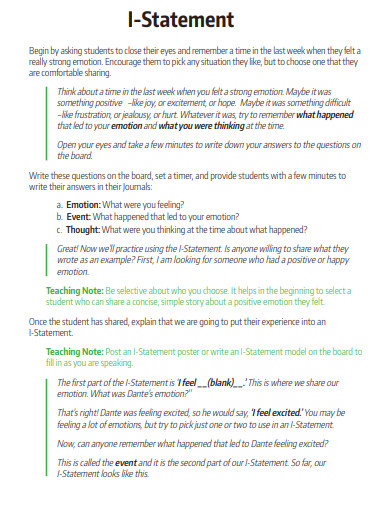
empoweringeducation.org
11. Value of I Statements Example
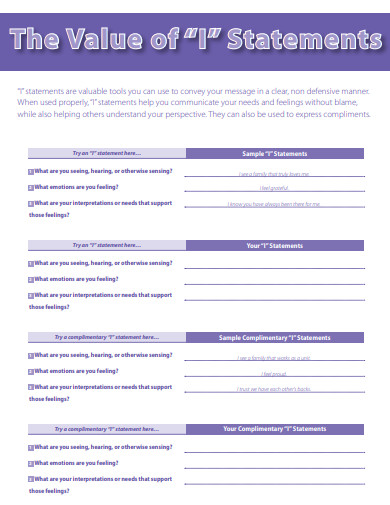
learn.dpbh.ucla.edu
12. Positive I Statements Example
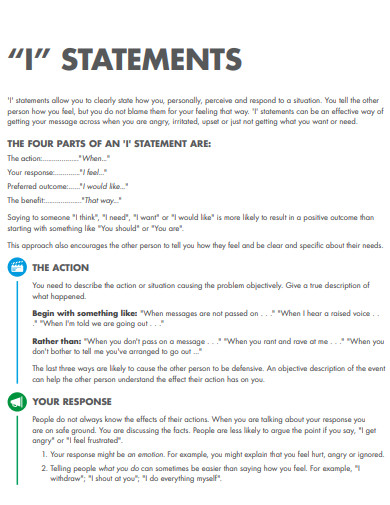
mindsourcecolorado.org
13. Relationship I Statements Example
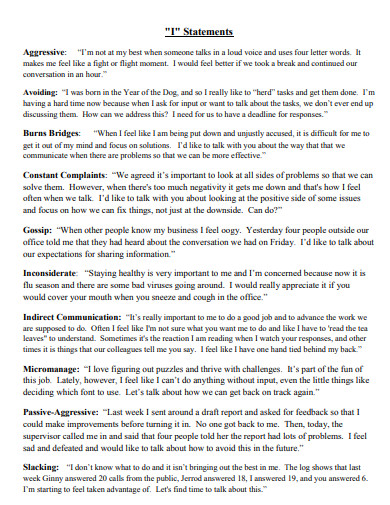
maui.hawaii.edu
14. Constructing I Statements Example
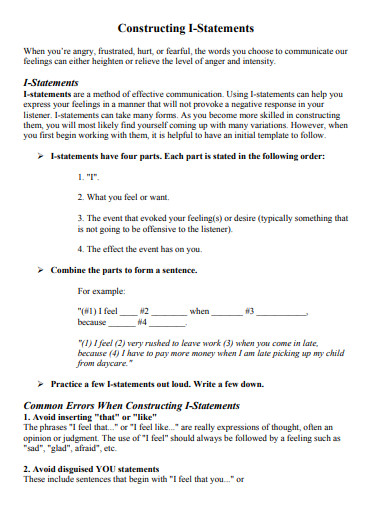
media.gcflearnfree.org
15. Elementary I Statements Example
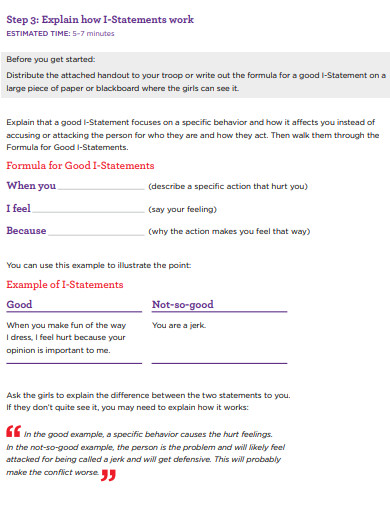
girlscouts.org
16. I Statements in PDF
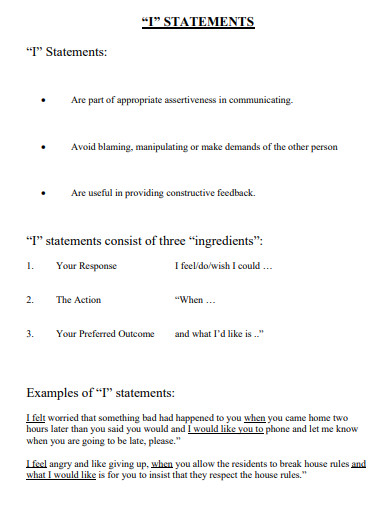
hannington.com.au
17. Free Printable I Statements Example
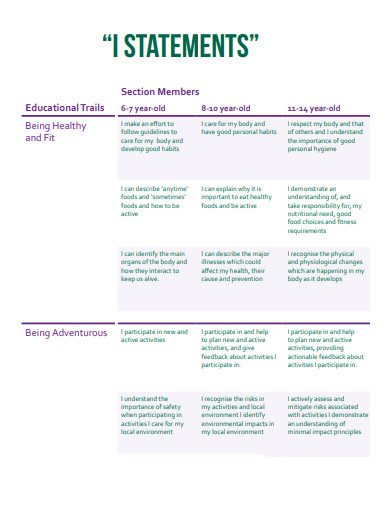
scouts.com.au
18. You And I Statements Example
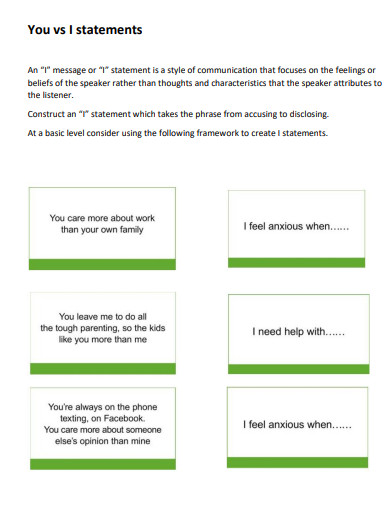
api.warwickshire.gov.uk
19. Smart I Statements Example

smartrecovery.org
20. Visual I Statements Example
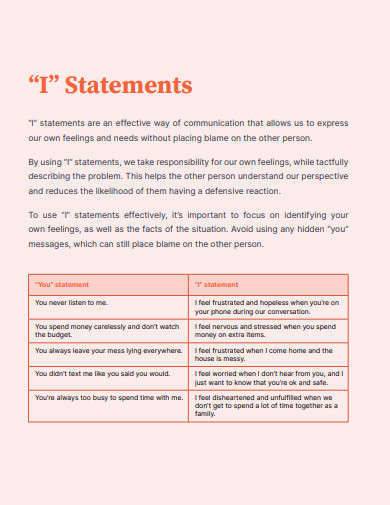
us.calmerry.com
21. Blank I Statements Example
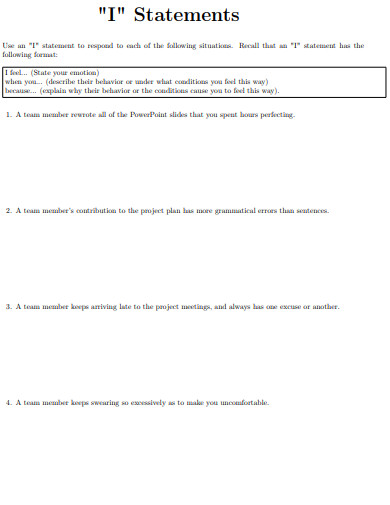
cs.toronto.edu
22. Simple I Statements Example
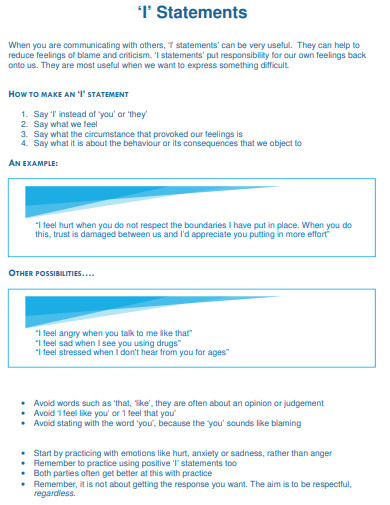
sharc.org.au
23. Draft I Statements Example
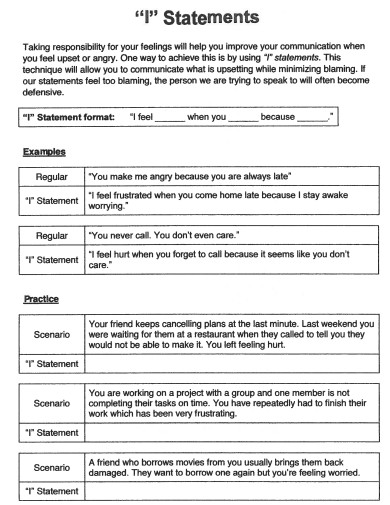
pirirochester.org
24. Covid 19 I Statements Example
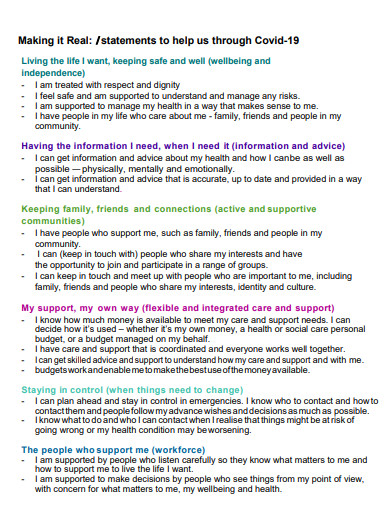
thinklocalactpersonal.org.uk
25. I Statements Framework Example
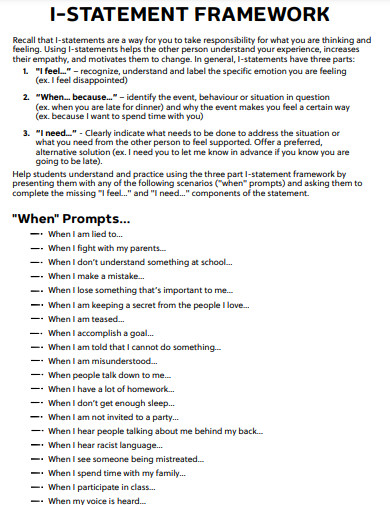
global-uploads.webflow.com
26. I Statements Format
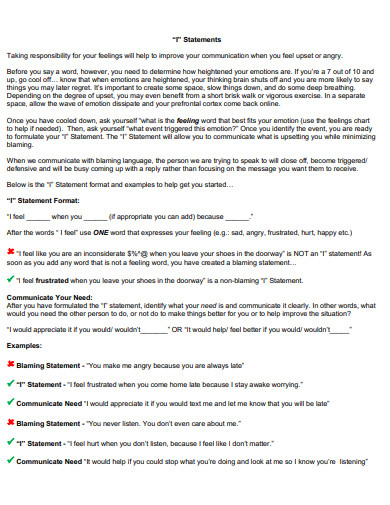
heartnsoulcounselling.com
27. I Statements Quality Assurance Example
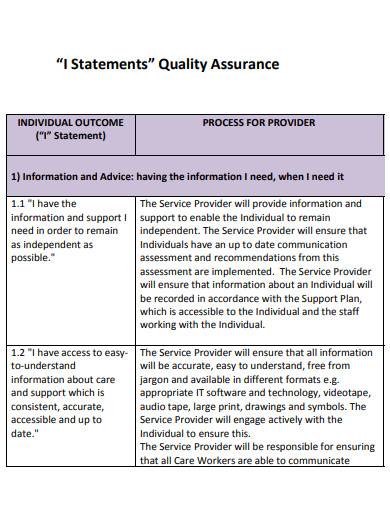
cmis.hullcc.gov.uk
28. Editable I Statements Example
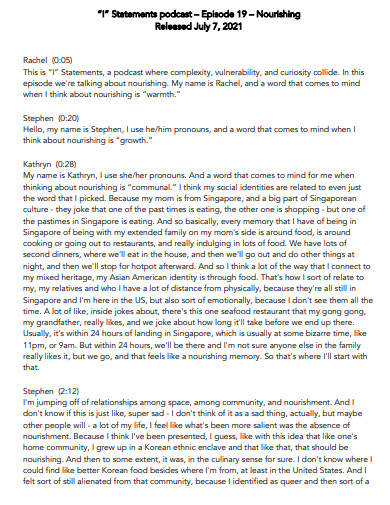
idp.cornell.edu
29. I Statements Script Example
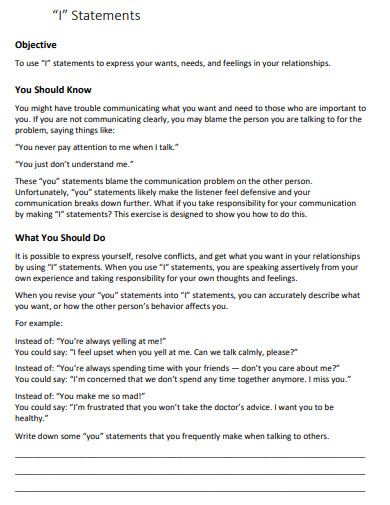
betweensessions.com
30. Standard I Statements Example
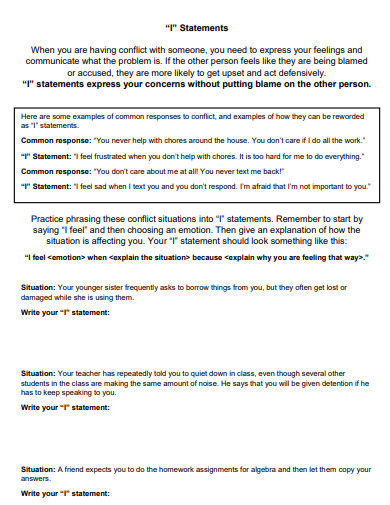
columbuslibrary.org
31. Professional I Statements Example
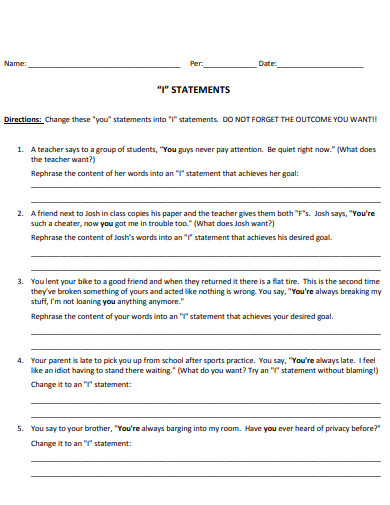
quia.com
What is an “I” Statement?
An “I” statement, also known as an “I” message or an assertive statement, is a communication technique that allows individuals to express their thoughts, feelings and needs in a non-confrontational and respectful manner. Unlike blaming or accusing statements, “I” statements focus on personal experiences and emotions, promoting understanding, empathy, and constructive dialogue.
How to Write an “I” Statement
Mastering the art of writing “I” statements can significantly improve your communication skills and foster healthier interactions. By following these step-by-step guidelines, you can effectively express yourself, establish better connections, and promote understanding in your relationships.
Step 1: Identify the Situation:
Start by identifying the specific situation or behavior that you want to address. Clearly understand the issue at hand and the impact it has on you, ensuring that you are expressing a genuine concern or feeling.
Step 2: Use “I” Language:
Craft your statement using “I” language to express your personal experience and feelings. Begin your statement with “I feel” or “I think” to assert ownership of your emotions or thoughts, avoiding blame or accusations towards others.
Step 3: Describe the Impact:
Clearly articulate how the situation or behavior affects you. Be specific and provide examples that illustrate the emotional or practical impact on your well-being, emphasizing your perspective without assuming the intentions or motivations of others.
Step 4: Express Your Needs or Expectations:
State your needs or expectations in a constructive manner. Focus on what you would like to see happen or what changes you desire, offering suggestions or alternatives that can contribute to a mutually beneficial resolution.
FAQs
Why are “I” statements effective in communication?
“I” statements are effective because they promote ownership of feelings and thoughts, reduce defensiveness, and encourage empathy. By expressing your own experiences and needs without blaming or accusing others, you create a safe and respectful space for open dialogue and understanding.
Can “I” statements be used in professional settings?
Absolutely! “I” statements can be used in various settings, including professional environments. They foster better teamwork, conflict resolution, and constructive feedback by focusing on personal experiences and fostering empathy and understanding.
Are there situations where “I” statements may not be suitable?
While “I” statements are generally effective in most situations, there may be instances where alternative communication approaches are more appropriate, such as emergencies or urgent matters that require direct and immediate action. Assess the context and adjust your communication style accordingly.
Mastering the art of using “I” statements empowers individuals to express themselves assertively and foster healthy communication. By employing this technique, you can create a respectful and empathetic environment, promoting understanding and constructive dialogue. Enhance your relationships and communication skills by incorporating “I” statements into your daily interactions.


